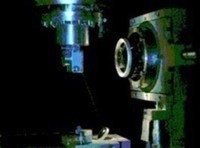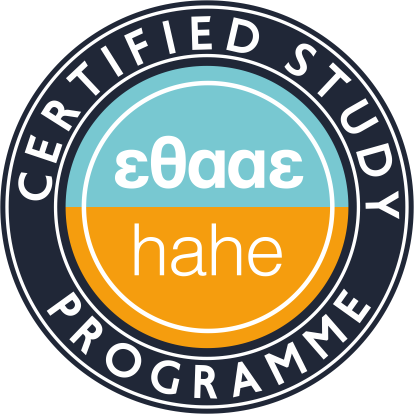
Eleni VigkaLecturer
Academic Field
Theoretical Solid State Physics, Electronic Properties of Solids
Courses
Laboratories & Divisions
Research Activity

By using spectroscopic techniques (Raman, IR, absorption, Photoluminescence) and the synergy of theoretical calculations (phenomenological models, first-principles calculations, group theory) the optical properties of a wide range of materials (semiconductors, fullerenes, carbon nanotubes, garnets, low-dimensional materials etc.) are studied. These techniques and theoretical methods are utilized for materials characterization (identification of polytypes and phases, crystallinity, presence of mechanical stress/strain, chemical functionalization, electronic doping etc.) as well as for the study of fundamental physical phenomena (electron-phonon interaction, Kohn anomalies, immediate neighboring interactions etc.).
Moreover, the influence of external perturbations (temperature, uniaxial or biaxial mechanical deformation, hydrostatic pressure, electrochemical doping etc.) modifies drastically the optical properties of a material providing, thus, information on the physical phenomena themselves and allows the investigation of structural stability and the study of pressure induced structural or electronic phase transitions of materials.
- Indicative activities:
- Study of optical properties under normal conditions, high pressure and as a function of temperature of materials such as semiconductors (ΙΙΙ-V, II-VI), fullerenes and related compounds, chemically modified carbon nanotubes and scheelite compounds (ABO4, Α = Ca, Sr, Ba and B = W, Mo).
- Study of the optical properties of two-dimensional materials such as graphene (single or multilayers), BN, transition metal dichalcogenides (MoS2, WS2, Mo1-xWxS2, MoSe2) as a function of their interaction with various substrates, physical or chemical electronic doping, mechanical deformation and hydrostatic pressure.
- Study of III-V nitrides (AlN, Gan, InN and their alloys) using Raman spectroscopy: effect of ion implantation and doping as well as of the stresses induced during the epitaxial growth.
- Lattice dynamics of the rare earth aluminum and gallium garnets in a crystal form and as solid solutions (RE3Al5O12 and RE3Ga5O12, RE=rare earth).
- Equipment:
- Raman and photoluminescence set-up consisted of a triple monochromator (DILOR ΧΥ) with gratings of 1800 lines/mm and a CCD (EG&G 1433-C) liquid-nitrogen-cooled detector.
- Raman spectrometer RAMALOG 5 equipped with a Peltier-cooled photomultiplier tube with GaAs photocathode and a triple-monochromator that covers the wavelength range 12000 – 28000 cm-1 (8500-3500Å), fully automated and PC controlled.
- Two Ar+ Lasers of Spectra Physics 2W.
- One Kr Laser of Lexel 1.5 W.
- One cryostat accompanied by a diffusion pump of Cryogenic that works down to 20 K.
- Gas membrane driven diamond anvil cells, micro-tensiometers for the application of mechanical deformation (uniaxial, biaxial).
RESEARCHERS

Activities:
- Dynamics and Kinetics of disordered solid state systems and fractals.
- Dynamics of neural networks and signal transfer.
- Estimation of electronic and optical properties of conventional and novel semiconductor material with technological applicability.
- Interface study (symmetry, energy and structure features) in polycrystalline materials with lattice model.
- Study of crystallite triplets in polycrystalline materials.
- Estimation of electronic and dynamic properties in crystals, amorphous materials, superlattices.
- Properties and Critical phenomena in ionic crystals.
- Lattice dynamics of crystalline solids (3D and 2D) using phenomenological models and first-principles calculations. Application of group theory for the interpretation of Raman and Infrared spectra.
- Difussion modelling, random walk, complex systems, low-dimensional systems, fractals, trapping events. - Statistical Physics Methodology.
Equipment:
PC Lab with parallel processing. Consists of 32 PCs (Intel Core 2 Duo, 64 processors), Total RAM 128 Gb, Storage Space 6.7 Tb, Operating System Scientific Linux.
